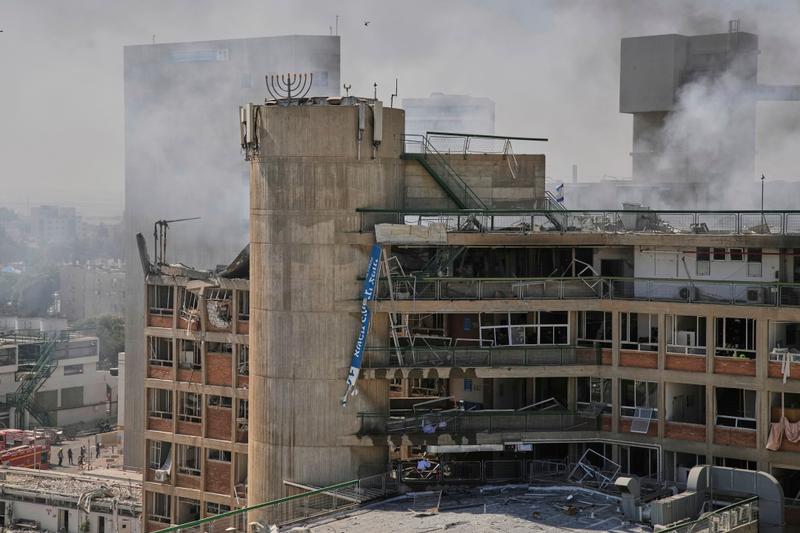On June 19, Iran launched a direct missile strike on Soroka Hospital in Beersheba, severely damaging one of the medical facility’s wards and injuring dozens. The attack underscores both the ferocity of the escalating Iran-Israel conflict and the inherent gaps in Israel’s multi-layered air defense umbrella.
According to sources, the missile that struck Soroka Hospital evaded the Iron Dome and David’s Sling batteries, penetrating Israel’s aerial shield and exposing a critical vulnerability. The Al-Monitor reported that this incident marks one of the rare cases where a mid-range ballistic missile slipped past Israel’s vaunted interceptors, hitting a high-value civilian target and provoking national outrage. The direct strike has prompted urgent assessments within the Israeli Defense Forces (IDF) regarding potential upgrades to radar coverage and the readiness of interceptors.
Since the conflict reignited last week, Tehran has launched over 450 missiles toward Israeli towns and military sites. IDF statements claim a roughly 90 percent interception rate. Still, the approximately 50 missiles that penetrated defenses inflicted significant infrastructure damage and resulted in at least 24 fatalities, according to the Israeli Home Front Command. Iranian commanders appear to be pacing their launches, firing smaller salvos to preserve missile stocks and maintain sustained pressure on Israeli defenses, per strategic analyses.
Israel’s Layered Defense Architecture
1. Iron Dome: Targets short-range rockets and artillery shells up to 70 km.
2. David’s Sling: Intercepts mid-range guided missiles out to 300 km.
3. Arrow 2 and 3: Work in tandem to destroy long-range and exo-atmospheric threats, with Arrow 3 engaging beyond 2,400 km.
4. THAAD: US-supplied batteries complement Arrow systems for high-altitude interception.
5. A-D laser prototype: Under trial, offering a future missile-free defense option.
Despite these defenses, the Soroka strike suggests gaps in radar netting and the finite availability of interceptors. Military analysts warn that Iran’s shift to sporadic launches extends the war of attrition, aiming to stretch Israel’s missile inventories and test the limits of its layered shields. Brig. Gen. (Res.) Ran Kochav, former commander of the air defense forces, noted that Tehran’s tactic of smaller salvos could be a deliberate move to preserve its dwindling missile stockpile. The IDF has countered by targeting launchers and depots deep inside western Iran, destroying an estimated two-thirds of known mobile missile sites, forcing Tehran to reposition launch assets farther east and thereby reduce missile payloads, observers note. Meanwhile, American THAAD batteries and SM-3 interceptors aboard US naval vessels continue to assist Israel’s defense umbrella, highlighting the international dimension of the conflict.
The hospital attack represents a stark signal that no defense system is impenetrable. As Israel accelerates joint research on directed energy weapons and enhances interceptor stocks, the broader conflict trajectory remains uncertain. The direct strike on civilian infrastructure not only tests Israel’s technical prowess but also underscores the humanitarian toll of a war fought at unprecedented range and intensity.
Photo: Le Monde
